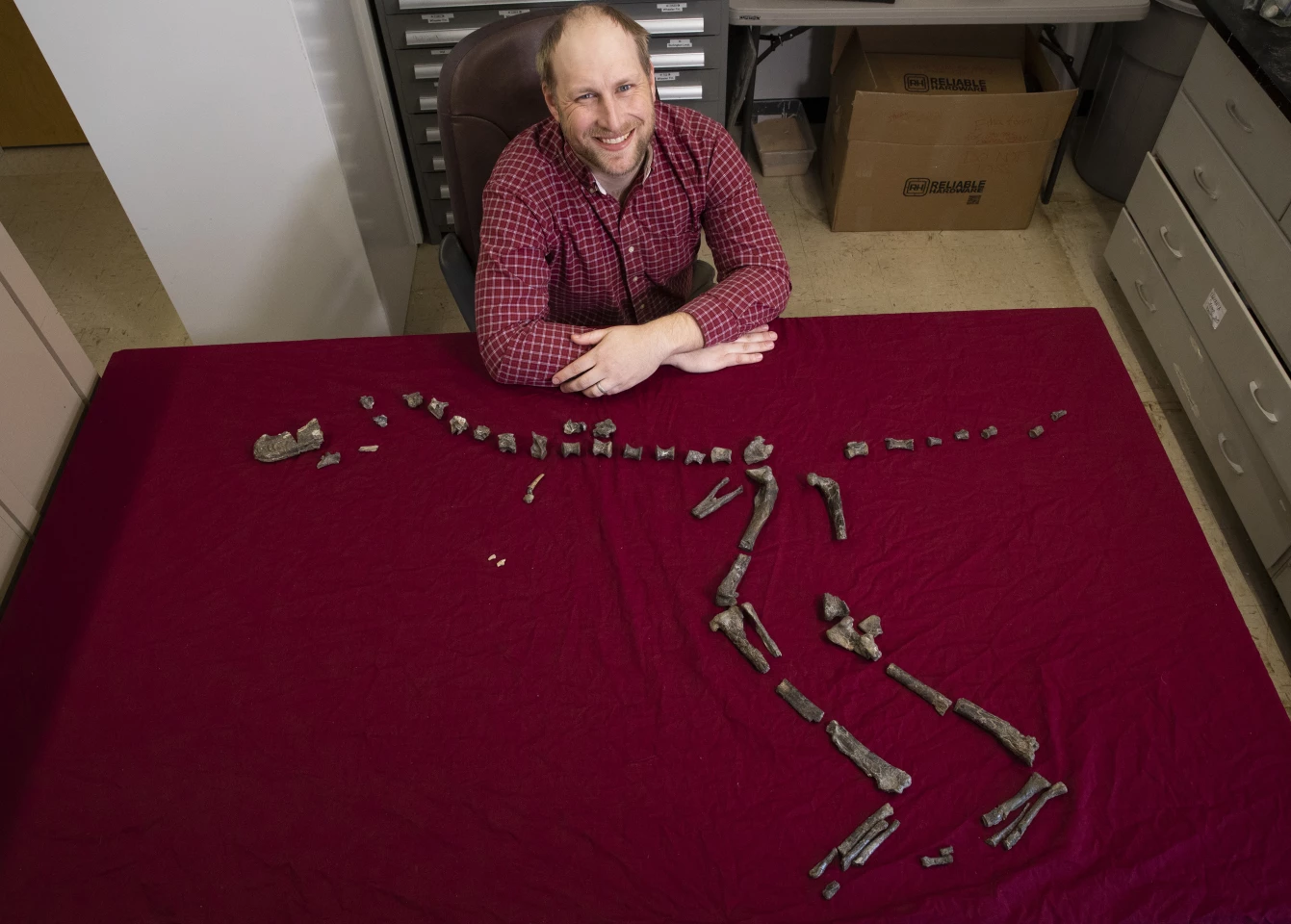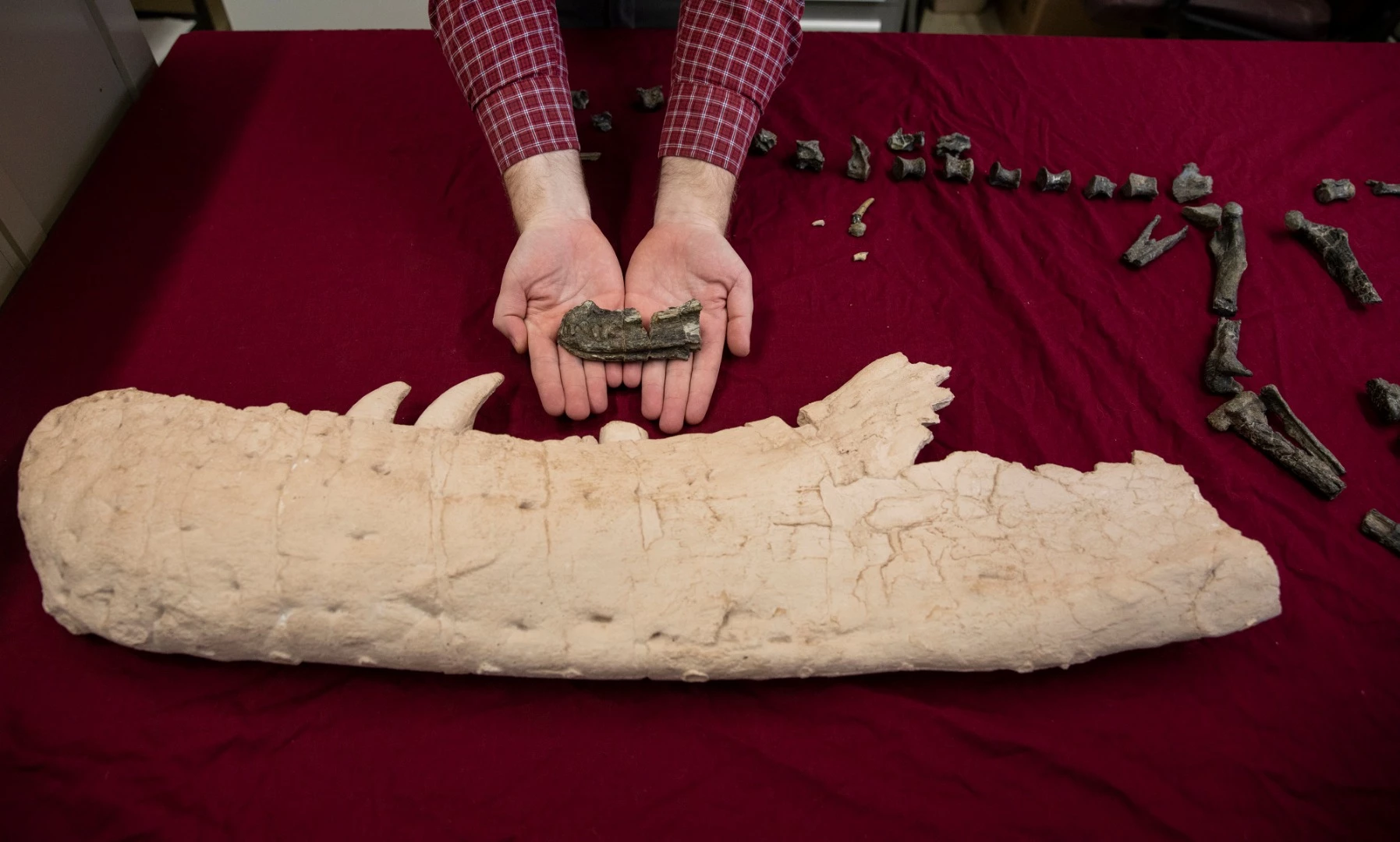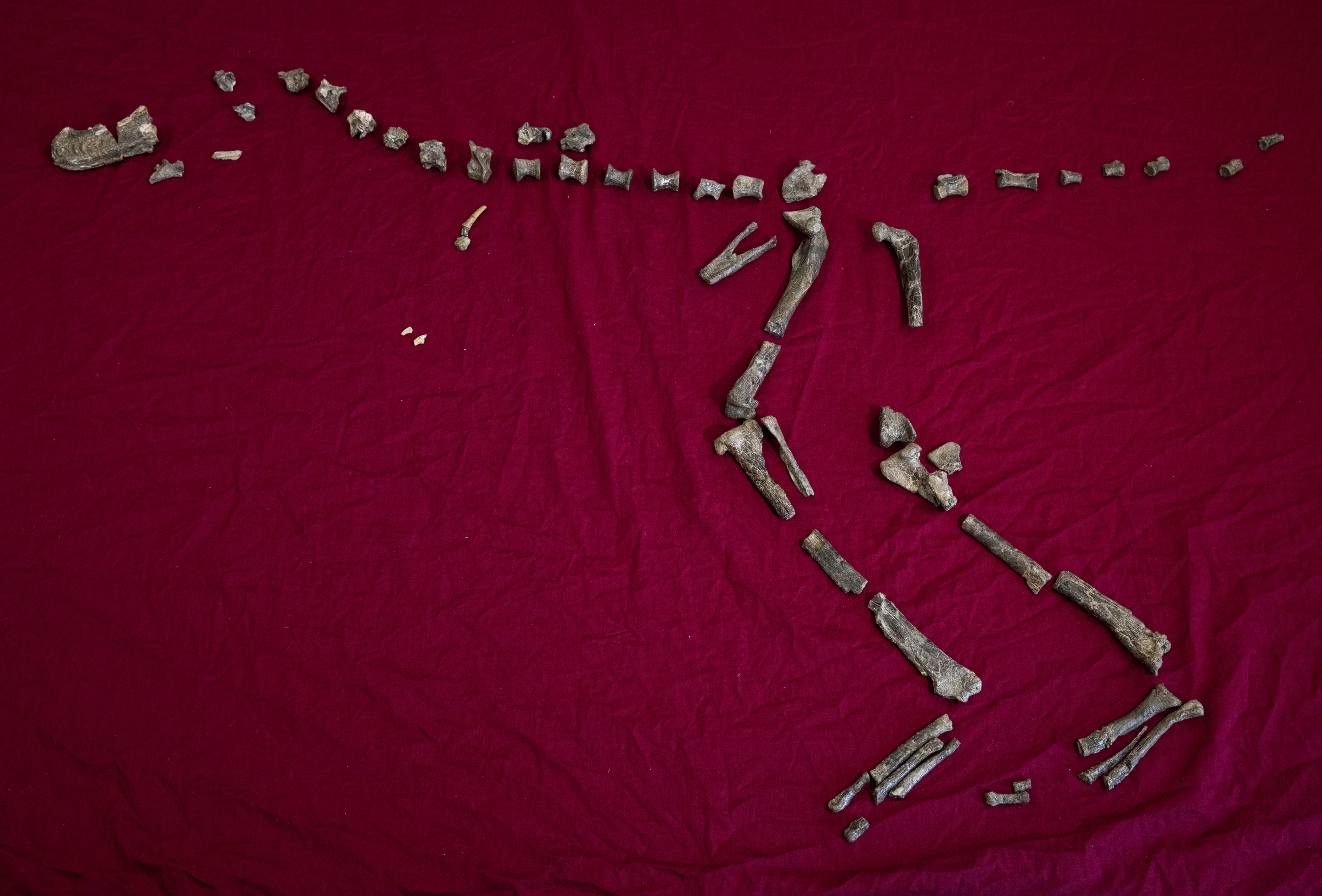In 1998, a 16 year old boy with a passion for paleontology unearthed a near-complete skeleton of one of Tyrannosaurus rex's cousins in New Mexico. It was a defining moment in the boy's life, but at the time – even though it was understood to be important – they had no idea what it really was. That boy was Sterling Nesbitt, and he's now an assistant professor at Virginia Tech's Department of Geosciences where his boyhood discovery has finally been named.
The newly dubbed dinosaur – Suskityrannus hazelae – wasn't what you'd call, big. Still, standing around 3 ft (0.9 m) tall at the hip and roughly 9 ft (2.8 m) from nose to tail, you'd still probably want to keep your distance. To put it in perspective, S. hazelae was a little longer than the skull of an adult Tyrannosaurus rex. Weight-wise, it was around 45 to 90 lb (20 to 40 kg). Compare that to the nine tons of a T-rex.

"My discovery of a partial skeleton of Suskityrannus put me onto a scientific journey that has framed my career," says Nesbitt. "I am now an assistant professor that gets to teach about Earth history."
Also present on the dig were James Kirkland, now of the Utah Geological Survey and dig leader, Doug Wolfe, who is also co-author on the paper, released yesterday.
"Following Sterling out to see his dinosaur, I was amazed at how complete a skeleton was lying exposed at the site," says Kirkland.

One of the reasons it's taken so long to name the find, is that the team wasn't quite sure what it had unearthed. At the time it was discovered, relatives of Tyrannosaurus rex were either unknown or unrecognized and the team first thought it had found the remains of a dromaeosaur ("running lizards"), the family of feathered dinosaurs that includes the infamous Velociraptor.
"Essentially, we didn't know we had a cousin of Tyrannosaurus rex for many years," says Nesbitt.
Based on bone-growth analysis, the skeleton of the little (relatively) tyrannosauroid was at least three years old at the time it died, and is thought to have survived on a diet of small animals, not unlike its monster cousin. Dating back 92 million years, it sits roughly smack dab in the middle of the Cretaceous period.
"Suskityrannus gives us a glimpse into the evolution of tyrannosaurs just before they take over the planet," says Nesbitt. "It also belongs to a dinosaurian fauna that just proceeds the iconic dinosaurian faunas in the latest Cretaceous that include some of the most famous dinosaurs, such as theTriceratops, predators likeTyrannosaurus rex, and duckbill dinosaurs like Edmotosaurus."
As such, Suskityrannus fills an important evolutionary gap in the tyrannosauroid family tree. With a foot particularly adapted for running and a powerful bite – traits unknown in early specimens or later, larger cousins – the authors regard S. hazelae as an intermediate tyrannosauroid, linking the earliest, smallest members to the giants of the Late Cretaceous.

"Suskityrannus has a much more slender skull and foot than its later and larger cousins, theTyrannosaurus rex," Nesbitt says. "The find also links the older and smaller tyrannosauroids from North America and China with the much larger tyrannosaurids that lasted until the final extinction of non-avian dinosaurs."
The new name for the little dinosaur, Suskityrannus hazelae, is derived from the Zuni Native American tribe word "Suski", meaning coyote, from the Latin "tyrannus" meaning king and finally, "hazelae", for Hazel Wolfe, who funded numerous digs in the Zuni Basin.
The findings are published in the latest issue of Nature Ecology & Evolution.
Source: Virginia Tech















